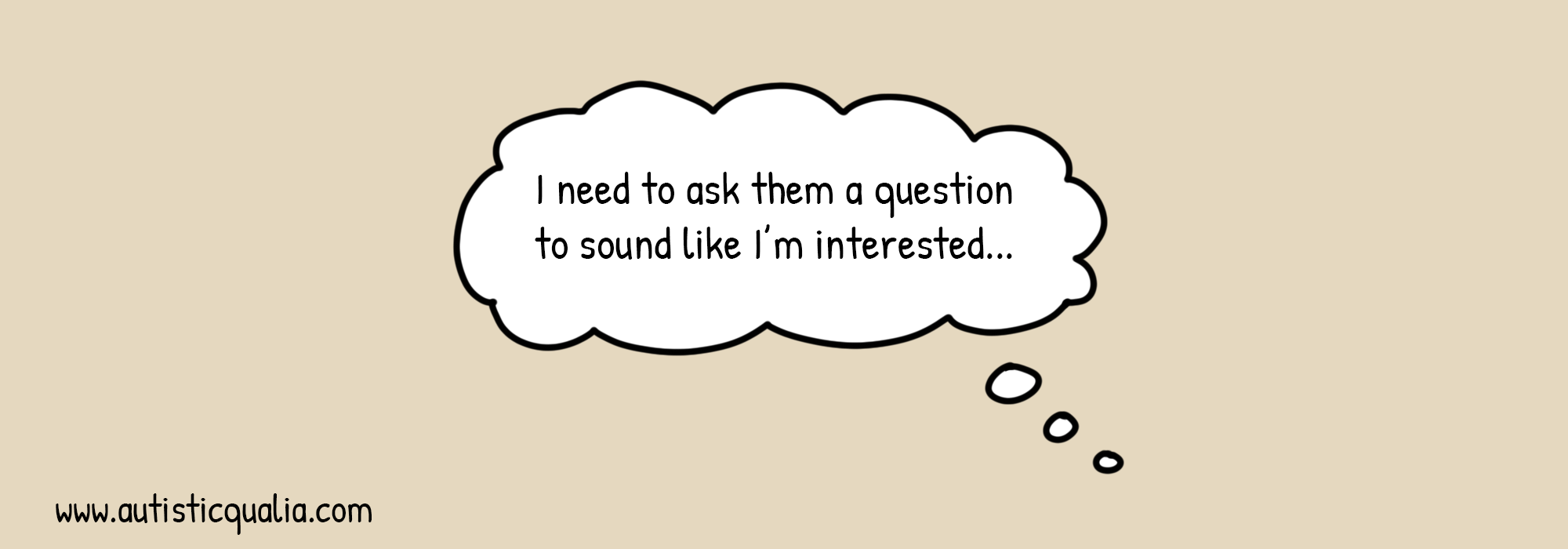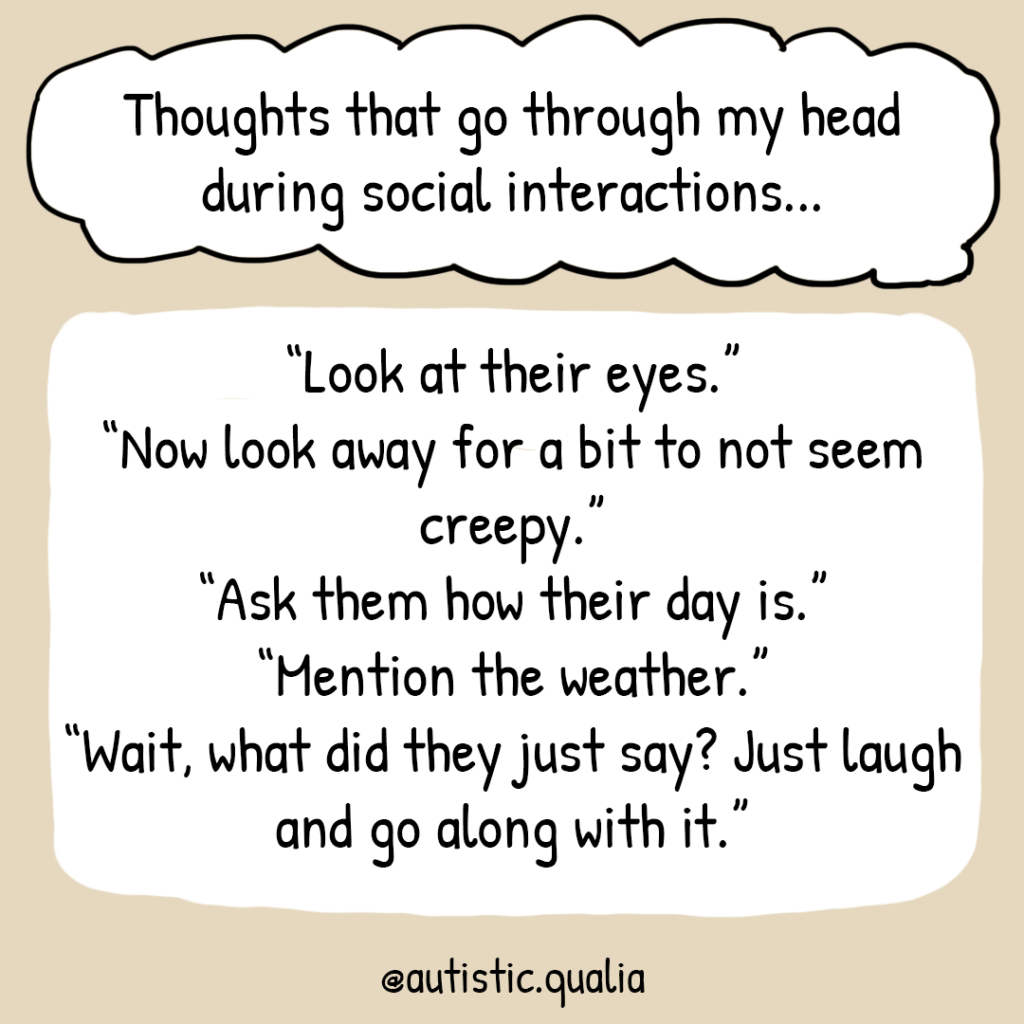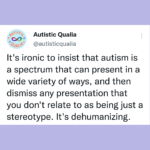
What is social compensation?
Social compensation is when a person attempts to display neurotypical social behaviours by using strategies in social situations that compensates for their innate social cognitive difficulties.
4 types of compensatory strategies
- Masking
- Shallow Compensation
- Deep Compensation
- Accommodation
*Accommodation is a compensatory strategy that is distinct but related to social compensation.
The 4 types of compensatory strategies were identified in a study of social compensation in autism by Livingston et al. (2020).
Masking
Masking: Simple strategies that involve decreasing or increasing (i.e. regulating) pre-existing social behaviours to blend in. Masking allows a person to blend in or go unnoticed in group situations, but it does not support active participation in social interactions. Masking tends to be passive and can become automatic. Anyone can mask, including neurotypicals who mask for reputation management (e.g. hiding controversial opinions).
Examples:
- Holding back true thoughts and opinions
- Smiling
- Quietly standing in a conversation
Shallow compensation
Shallow compensation: Strategies that involve applying simple social rules which may not work across all contexts. This enables the production of neurotypical behaviours without a deep understanding (e.g. incomplete theory of mind).
Examples:
- Copying gestures
- Using scripts in conversations
- Making “appropriate” eye contact
- Asking questions to seem like a “good listener”

Deep compensation
Deep compensation: More sophisticated strategies that flexibly work across a variety of contexts by taking into account the unique details of a situation. Deep compensation strategies successfully solve the theory of mind and can genuinely improve social cognition. These methods used to predict others’ mental states may be different from how neurotypical people obtain theory of mind. Although deep compensation strategies may initially be challenging to devise, they can become automatic with time. Some deep compensation strategies may also work unconsciously.
Examples:
- Using complex mental algorithms that factor in the context, facial expression, tone of voice, etc. to figure out what another person may be thinking or feeling
- Pattern matching the details of a situation with memories of similar situations to infer someone’s mental state
Both shallow and deep compensation are active strategies that help an individual to appear to have neurotypical social skills. However, only shallow compensation is uniquely correlated with autism traits according to a quantitative study by Livingston et al. (2020).
Accommodation
Accommodation: Strategies that involve actively seeking out accommodating environments without necessarily altering one’s social behaviour.
Example:
- Working in an environment where differences are supported
- Living in a foreign country so that social difficulties are attributed to being a foreigner
Theory of mind
Having a theory of mind means that the individual is capable of understanding that others have unique minds of their own. A person with a theory of mind is able to guess what other people may be thinking, feeling, and intending and use this knowledge to predict their behaviour. “Theory of mind” is sometimes used synonymously with “cognitive empathy” and the distinctions between the two concepts are currently unclear.
Do you use compensatory strategies?
Do any of the compensatory strategies described above resonate with you? Are you autistic or allistic? Share what strategies you use in the comments! I am particularly curious about others’ complex deep compensation strategies.
Sources & further reading
Livingston, L. A., Shah, P., & Happé, F. (2019). Compensatory strategies below the behavioural surface in autism: a qualitative study. The Lancet Psychiatry, 6(9), 766-777. https://doi.org/10.1016/S2215-0366(19)30224-X
Livingston, L.A., Shah, P., Milner, V. et al. Quantifying compensatory strategies in adults with and without diagnosed autism. Molecular Autism 11, 15 (2020). https://doi.org/10.1186/s13229-019-0308-y



